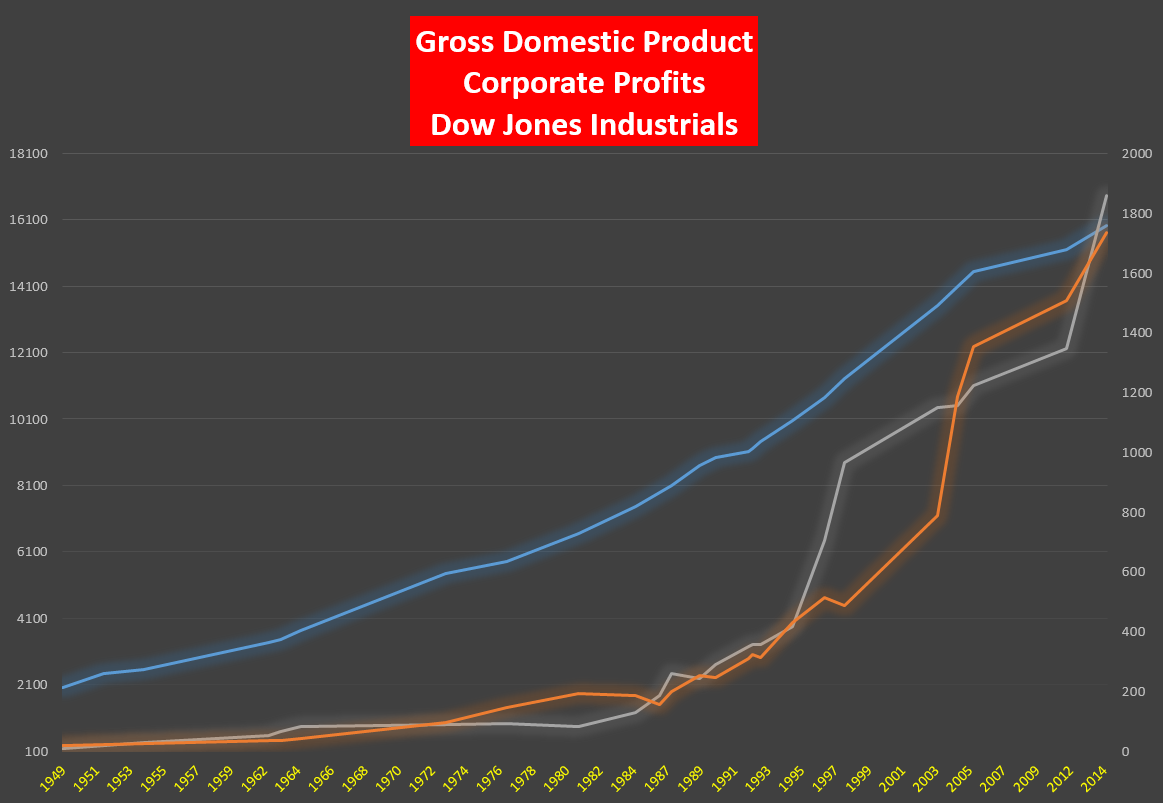Market observers are sure to keep a close eye on the economy at large, specifically the Gross Domestic Product (GDP) growth rate, rightfully so. History has shown that economic growth, corporate profitability, and stock prices have paralleled rather nicely from an investors standpoint since the end of WWII, as illustrated in the following chart.
In fact, real GDP growth (adjusted for inflation) has risen at an impressive 3.1% compounded annual rate these past 70 years. Corporate profits in the U.S. have grown in tandem with the economy, albeit much faster 6.6% yearly advance. The Dow Jones Industrial Average price rose from $171 per share to $25,412, or 7.1% compounded return, excluding dividends. Add in quarterly dividends, and the figure tops 10.9%.

So, what does 4.1% GDP growth mean to investors, now? Including Q2-2018’s 4.1% advance, domestic GDP has grown within the 4% range 26 times. 21 out of 25 occurrences the DJIA posted profitable results the following quarter, 84% of the time. Will Trump’s 4.1% follow a trend or break suit? In 65 more days we will know the answer to that question. As of today, the market is marching in its historical footsteps up 4.3% thus far in Q3.

—William “Chip” Corley
Author of Financial Fitness: The Journey from Wall Street to Badwater 135

DISCLOSURE: IMPORTANT DISCLAIMER: The opinions made herein are for informational purposes and are not recommendations to any person to buy or sell any securities. The information is deemed to be reliable but its accuracy and completeness are not guaranteed. 1st Discount Brokerage does not accept any liability for the use of this column. Readers of this column who buy or sell securities based on the information in this column are solely responsible for their actions. Investors/traders are advised to satisfy themselves before making any investment. Nothing published on this site/ article should be considered as an investment advice. It’s not an offer to buy or sell any security. Readers are solely responsible for their profits or losses.
The views and opinions expressed in this article are those of the authors, and do not represent the views ofequities.com. Readers should not consider statements made by the author as formal recommendations and should consult their financial advisor before making any investment decisions. To read our full disclosure, please go to: http://www.equities.com/disclaimer

